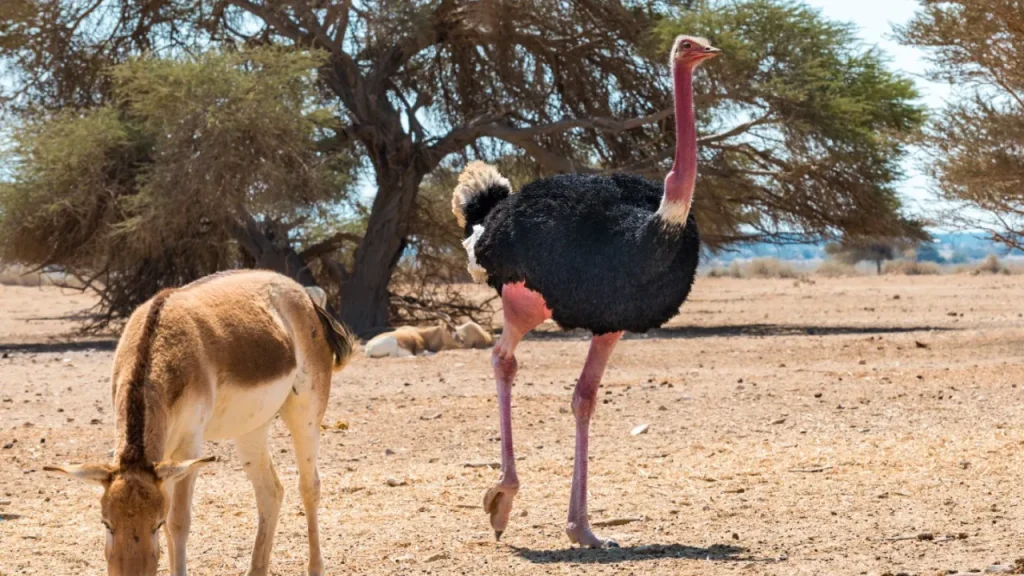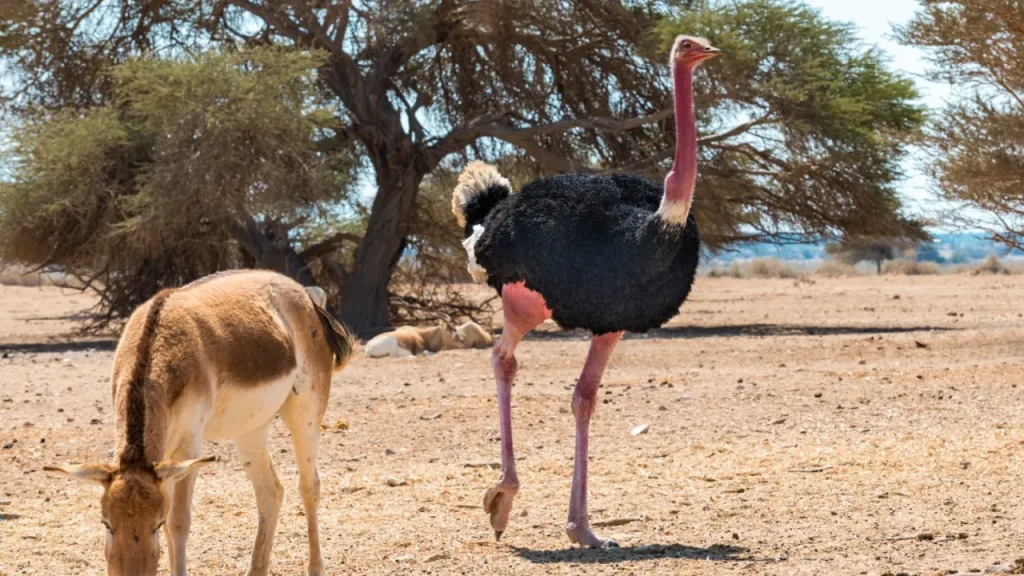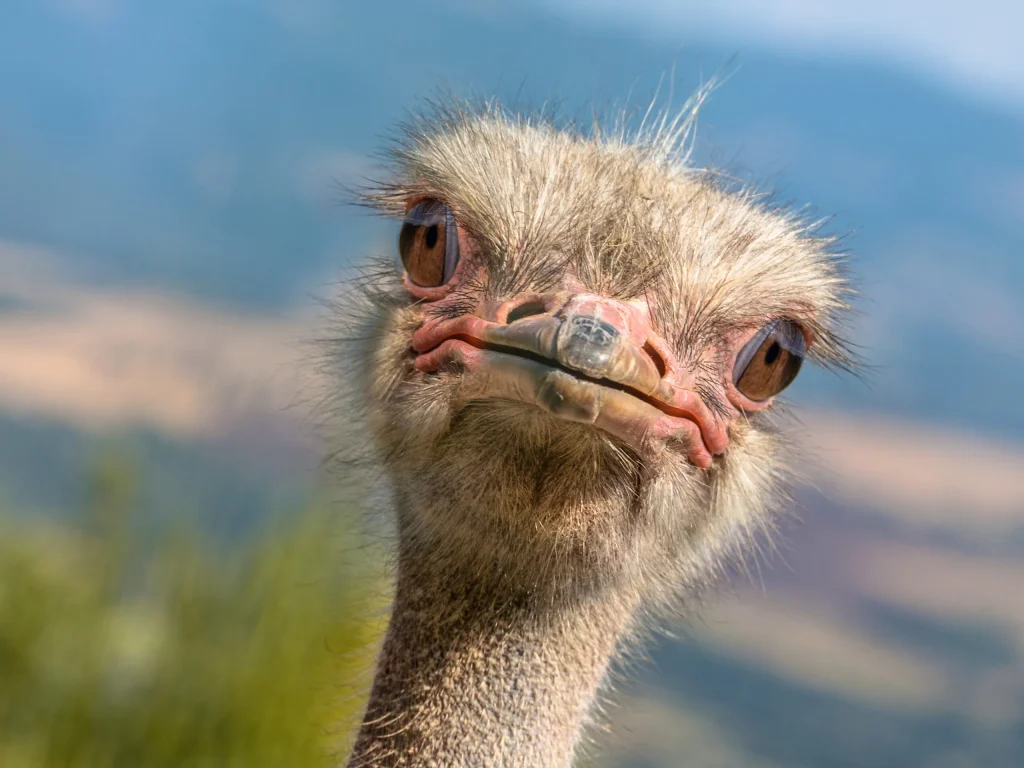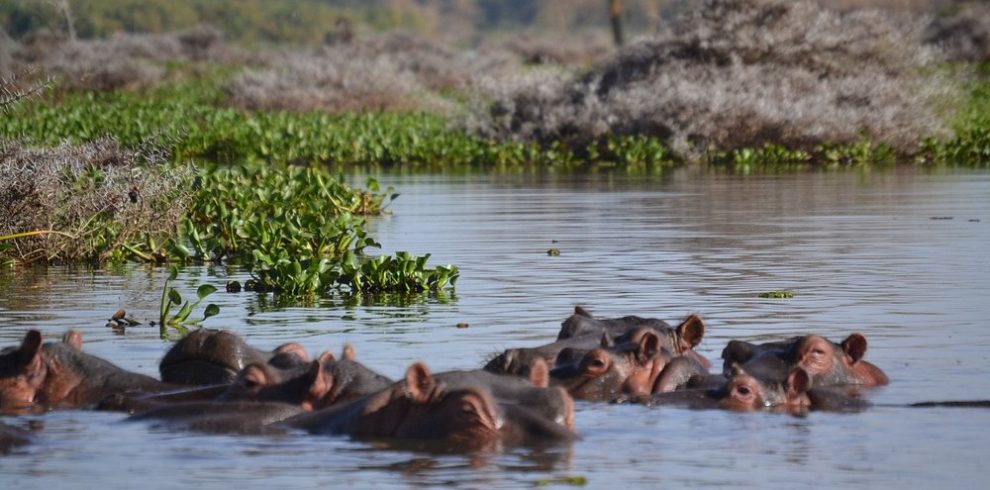
The ostrich, known scientifically as Struthio camelus, is one of the most fascinating and unique birds on the planet. It is the largest living bird in the world and although it does not fly, its phenomenal adjustments have made it adapt well in some of the driest and most challenging conditions on the surface of the earth. From its remarkable size to its impressive speed, the ostrich never fails to capture the imagination of nature lovers and animal enthusiasts alike. In this article, we will dive into 5 fascinating facts about the ostrich, exploring its biology, behavior, and ecological significance.
1. Ostriches Are the Largest Living Birds

One of the most obvious and awe-inspiring facts about the ostrich is its sheer size. The ostrich is the largest living bird in the world, and its size makes it an incredible spectacle in the wild. Adult male ostriches can grow up to 9 feet (2.7 meters) tall and weigh between 220 and 290 pounds (100-130 kilograms). Females, although smaller, attain a height of between 6.5 to 7 feet (2 to 2.3 meters) and have a weight range of 150 to 260 pounds (70-120 kilograms).
Massive Size and Adaptations
The ostrich’s large size is not just for show; it serves several functional purposes. It is widely distributed in Africa, where it naturally inhabits hot climates, due to its large body which assists it to retain heat. The size of the bird also enables it hold a lot of fat, which it can utilize during hard times particularly in dry places. This adaptation helps ostriches survive in regions where water is scarce, as they can go for extended periods without drinking.
Despite being a large bird, ostriches have relatively small wings in comparison to their body size. They do not fly with their wings as most birds do but balance and court on them. Their wings assist them in keeping to balance even at high speeds and they are also capable of using them to create dramatic shows to impress the mates.
The Largest Eggs
In addition to their massive size, ostriches are known for laying the largest eggs of any living land animal. An ostrich egg can weigh up to 3 pounds (1.4 kilograms) and is roughly equivalent in size to 24 chicken eggs. The eggs are not hard-shelled but are leathery in texture and its shell is thick and tough to ensure that the developing chick is secured. Due to their size, these eggs are also a valuable resource for many predators in the wild, although adult ostriches are known to fiercely protect their nests.
2. Ostriches Are Remarkable Runners

Another fascinating fact about the ostrich is its incredible speed. While most birds are not known for being fast runners, the ostrich defies this stereotype and holds the title of the fastest-running bird on Earth. The ostrich’s powerful legs and specialized muscles allow it to run at speeds of up to 45 miles per hour (72 kilometers per hour) in short bursts, with a sustained speed of 30 to 40 miles per hour (48-64 kilometers per hour).
Anatomical Adaptations for Speed
The ostrich’s long, muscular legs are a key factor in its running ability. Unlike most birds, whose legs are adapted for perching or walking, the ostrich’s legs are designed for sprinting. Its legs are long and powerful and there are only two toes per foot another special adaptation to promote speed. This two-toed foot structure helps reduce drag and allows the ostrich to maintain greater speed while running.
Ostriches also have large thigh muscles that allow them to take long strides, covering 10 to 16 feet (3 to 5 meters) with each step. They can overcome many of their natural enemies like lions and cheetahs, which may otherwise, be a threat to their survival by outrunning them with their high speeds. Even though they cannot fly, the ostrich’s running ability makes it a formidable presence in the wild.
Running in a Straight Line
Ostriches are not only fast runners, but they are also capable of running in a straight line, which is an important factor in evading predators. When they are threatened, ostriches can sprint at top speeds in a straight path, making it difficult for predators to catch them. This straight-line running ability is a significant survival trait, as it allows ostriches to escape from danger with ease.
3. Ostriches Have Unique and Complex Social Behaviors

Social behavior is another captivating aspect of facts about the ostrich. Despite their size and intimidating appearance, ostriches are social creatures and often live in groups called flocks. Depending on the resource and seasonal availability, a flock may consist of only a few individuals to more than 100 birds.
Flock Structure and Roles
In ostrich flocks, there is a clear social hierarchy. The males are predominantly adults and are the group leaders. The males fight over the females and the strongest and most competent males will usually be the ones to breed the females. However, the social structure of an ostrich flock is dynamic, and younger males may challenge dominant males for their position.
The female roles are also significant in the flock. In others, many females may lay their eggs together in a nest, and the most dominant female may bring it to bear. The males however have the role of safeguarding the eggs against predators. At hatching time, both the male and female in turns guard the young.
Courtship and Mating Rituals
Courtship is a highly visible and dynamic part of ostrich behavior. Males are also known to do lengthy dances to impress the females, which includes a variety of head-bobbing motions, flapping of the wings, and even stomping their feet. These are intended to show the male strength and stamina and it is to these that females will tend to select mates.
In addition to their courtship rituals, ostriches also engage in cooperative parenting. Protecting and raising the young is the responsibility of both males and females and it is a behavior that augments the possibility of survival of the chicks amidst the harsh environment in the African savanna.
4. Ostriches Are Known for Their Unique Eyes and Vision

Another remarkable aspect of the ostrich’s biology is its vision. Ostriches have the largest eyes of any living land animal, with each eye measuring about 2 inches (5 centimeters) in diameter. These huge eyes have evolved in such a way that they enable them to see prey even at long distances thus making them a very good lookout in the wild.
Eyesight and Predator Detection
The ostrich’s large eyes provide exceptional vision, especially in daylight. They possess a perfect visual acuity which helps them to be aware of something moving miles away. This ability to spot potential predators, such as lions or cheetahs, from a distance is crucial for the ostrich’s survival. Because of their keen eyesight, ostriches are often the first to spot danger, and they can alert the rest of the flock to a potential threat.
Interestingly, ostriches are also known for their ability to see in color, which helps them detect food sources and predators. They also have good eyesight, which helps them move at high speed, as they are able to utilize their surrounding features and dodge any imminent obstacle in their way.
Eye Position and Field of View
Ostriches have eyes that are positioned on the sides of their heads, giving them a wide field of view. This arrangement enables them to observe the terrain around them so that they can detect dangerous scenarios as they graze or travel through open areas. They are usually able to detect predators well before other animals and they can scan long distances to detect danger due to their long necks.
5. Ostriches Are Facing Environmental Challenges, But Conservation Efforts Are Helping

Despite their size and resilience, ostriches face several challenges due to habitat loss and human interference. Nevertheless, one is attempting to conserve these amazing birds and their natural surroundings. Understanding the conservation status of ostriches is an important aspect of facts about the ostrich, as it sheds light on the threats they face and the steps being taken to protect them.
Threats to Ostriches
Ostriches are primarily found in the savannas and semi-desert regions of Africa, where they face challenges from human activities. Habitat destruction, farming, and overgrazing by livestock have led to the fragmentation of ostrich populations. Additionally, poaching for their feathers, skin, and eggs has posed a significant threat to ostrich populations, particularly in areas where ostrich farming is prevalent.
Conservation Efforts
Fortunately, there are ongoing conservation efforts to protect ostriches in the wild. Several national parks and wildlife reserves in Africa have been established to safeguard ostrich habitats and protect them from poaching. In some regions, ostriches are being farmed sustainably, with strict regulations in place to ensure that wild populations are not overexploited.
Efforts to raise awareness about the importance of ostrich conservation have also helped improve the bird’s status. Organizations like the International Union for Conservation of Nature (IUCN) monitor ostrich populations and work with local communities to reduce the threats they face.
Conclusion
The ostrich is an extraordinary bird, characterized by its immense size, speed, social structure, and unique adaptations. From its ability to run at incredible speeds to its remarkable eyesight and social behaviors, the ostrich is a living testament to the incredible diversity of life on Earth. Understanding these facts about the ostrich enhances our appreciation for this remarkable creature and highlights the importance of protecting it for future generations. While ostriches face threats from human activity and environmental change, conservation efforts are helping to ensure that these magnificent birds continue to thrive in the wild for years to come.






